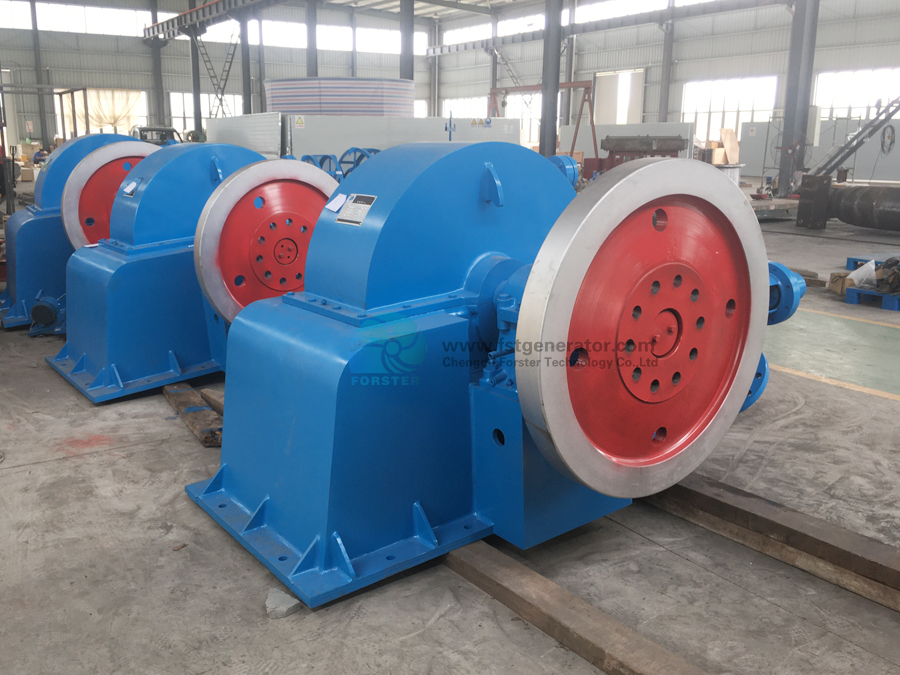Small-scale hydropower generation (referred to as small hydropower) has no consistent definition and demarcation of capacity range in countries around the world. Even in the same country, at different times, the standards are not the same. Generally, according to the installed capacity, small hydropower can be divided into three grades: micro, small and small. Some countries have only one grade, and some countries are divided into two grades, which are quite different. According to my country’s current regulations, those with an installed capacity of less than 25,000 kW are called small hydropower stations; those with an installed capacity of not less than 25,000 kW and less than 250,000 kW are medium-sized hydropower stations; those with an installed capacity greater than 250,000 kW are large-scale hydropower stations.
Small-scale hydroelectric technology The technology of converting kinetic energy in water into other forms of energy is a well-established process and has been used efficiently for centuries to generate electricity. Therefore, it has become one of the main means of power generation in many countries, especially some less developed countries in Africa, Asia and South America. The technology started out on a small scale and served several communities near generators, but as knowledge has expanded, it has enabled large-scale power generation and long-distance transmission. Large-scale hydroelectric generators utilize vast reservoirs that require the construction of special dams to control the flow of water, often requiring the use of large amounts of land for this purpose. As a result, there have been growing concerns about the impact of such developments on the environment and ecosystems. These concerns, along with the high cost of transmission, have drawn interest back into the production of small-scale hydroelectric power. Initially, in the early stages of the development of this technology, electricity generation was not its main purpose. Hydraulic power is mainly used to perform mechanical work to accomplish intended tasks such as pumping water (both domestic water supply and irrigation), grinding grain and mechanical operations for industrial activities.

Large-scale centralized hydropower plants have proven to be expensive and environmentally damaging, disrupting the balance of ecosystems. Experience tells us that they are the ultimate source of the high cost of transmission and the resulting high consumption of electricity. Other than that, there are hardly any rivers in East Africa that can sustainably and steadily support such equipment, but there are some small rivers that can be used for small-scale power generation. These resources should be used efficiently to provide electricity to scattered rural households. Besides rivers, there are other ways to get electricity from water resources. For example, seawater thermal energy, tidal energy, wave energy and even geothermal energy are all water-based energy sources that can be harnessed. With the exception of geothermal energy and hydroelectric power, the use of all other water-related energy sources has not had any significant impact on the global electricity supply system. Even hydropower, one of the oldest power generation technologies that is well-developed and used on a large scale today, accounts for only about 3% of the world’s total electricity generation. The potential of hydropower as an energy source is higher in Africa than in Eastern Europe and comparable to that in North America. But unfortunately, even though the African continent leads the world in untapped hydropower potential, thousands of residents still have no access to electricity. The utilization principle of hydropower involves converting the potential energy contained in the water in the reservoir into a free-fall kinetic energy for mechanical work. This means that the equipment that stores the water must be above the energy conversion point (such as a generator). The amount and direction of free flow of water is primarily controlled through the use of water pipes, which direct the flow of water to where the conversion process takes place, thereby generating electricity. 1
The role and significance of small hydropower The power industry is the leading industry of the national economy. Energy is also a pressing issue in our country today. Rural electrification is an important aspect of agricultural modernization, and the nation’s small hydropower resources are also a good source of energy to provide rural electricity. Over the years, with the support of the state and local levels, various forces have been mobilized, water management and power generation have been closely integrated, and the small-scale hydropower generation business has achieved vigorous development. my country’s small hydropower resources are quite rich. According to the survey of rural hydropower resources (I0MW≤single station installed capacity≤50MW) organized by the state, the developable amount of rural hydropower resources in the country is 128 million kW, of which the developable amount of small hydropower resources (above I0MW) is reviewed. River and 0.5MW≤ single station installed capacity
Post time: Sep-15-2022
